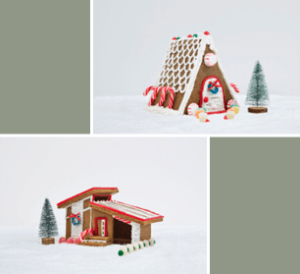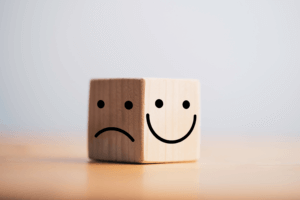6 Pandemic-driven Trends in Healthcare Design

As an architect that specializes in healthcare design, I’ve been to many healthcare trade shows and conferences over the past 25 years. One of the best is the Healthcare Design Conference + Expo (HCD). I have come to expect walking away with new knowledge of modest but intriguing product improvements, refinements to planning and programming principles, and quality case studies of recently completed projects and outcomes.
At this year’s HCD Conference in San Antonio, my expectations for takeaways were exceeded. . . pleasantly. It turns out, as our world seemingly paused at the height of the pandemic, the entire healthcare industry looked forward, taking the pause as an opportunity to reflect, improve, and innovate.
Here are my top 6 insights about pandemic-driven healthcare shifts:
1: There is a renewed focus on supply chain and local materials sourcing.
International shipping delays not only increased the cost of goods during the pandemic, but also introduced unpredictable delays, sending shockwaves across the industry. During the peak of COVID hospitalizations, the lack of healthcare equipment and construction goods became a bottleneck to accessing acute care treatment. This was a frustration of healthcare providers and administrators nation-wide. US manufacturing of goods appears to have heard the message and is responding. We are seeing both greater diversity in product offerings and a ramping up of manufacturing capacities.
2: Every step saved is a moment earned.
Distributed nursing isn’t a new concept, but gathering resources remains a time-consuming, laborious activity that keeps providers from doing what they do best. It’s difficult to draw/send labs and receive/draw-up controlled medications while also keeping eyes on the patient. Every step saved is another moment that can be spent with our patients. For example, smarter, communicative, and quiet pneumatic tube systems that speak directly to each care provider with individualized alerts, notifications, and secure internal storage are being implemented in healthcare design. Securing the tube stations in a room is no longer mandatory for noise and medication security, thus these spaces can be reclaimed for better uses now.
3: It’s not just the millennials.
Seniors are far more tech savvy than we give them credit for, especially when well-motivated. Although providers have no illusions that technology is a replacement for human touch, we are beginning to see caregiver outreach and responsiveness grow. Telehealth communications and at-home monitoring technology took a huge leap forward during the past three years. Virtual meetings, education, and even virtual holiday gatherings changed how we perceive our interactions. These shifts, together with the rapid expansion of broadband and the reliability of at-home monitoring systems, allows clinicians to project services further and at greater convenience to patients.
4: We’re softening the edges of behavioral health environments.
Unlike other areas of healthcare, behavioral health units haven’t changed much over the past ten years. Historically, products and fixture offerings tend to reflect correctional, not rehabilitative, environments. Cold materials and utilitarian forms, while durable, feel dehumanizing. It’s no small irony that in contrast, behavioral health treatment requires a level of socialization and a sense of community. The tides are shifting, however! With more manufacturers based in the U.S, than ever before, the material offerings are starting to look and feel closer to a home environment. New types of shelves and mirrors look like those found in an apartment, yet include all of the necessary safety and security features. Hardened urethane furniture provides the same durability as the typical cast plastic pieces, but with increased give and cushion for a more relaxed, comfortable seating posture. A much wider variety of upholstery fabrics are now available, offering a greater range of color/texture and improved durability. There are more privacy options available than ever, like individualized bracelets that only allow the resident and staff access into patient rooms.
5: Patient comfort is on display.
One of the chief complaints shared by providers is the dreaded floor transition bumps. After several surgeries, I fully empathize with this. Several flooring manufacturers are producing equivalent thickness carpet and vinyl flooring that doesn’t require transition strips, decreasing what is known as the “ka-thunk” factor. Some may see this as a small issue, but for those in severe or emergent pain, every stop, bump or turn is an assault to the senses. On the same note of patient comfort, we’re seeing flexible EMR technology play a major role by allowing services like smartphone screening, remote check-in, and self-rooming.
6: We’re undoing the “afterthoughts” in design…finally.
As a healthcare planner and architect, I bristle at the unsightly. A great example are alcohol rub dispensers arrayed along a patient corridor. While necessary, they often lack a drip-retainer, or worse yet, are empty or battery-dead. It’s an unsightly and costly component in healthcare facilities everywhere, and I’m pleased to see new, innovative solutions entering the market. At the 2022 HCD, we saw both built-in and portable P.O.E. (powered over ethernet) devices that self-report need for refill or repair. While initial cost is high today, doubtless these costs will drop dramatically in the next couple of years.
From flooring to paint, ceiling tiles to gypsum board and everything in between, I saw great strides forward in nearly every corner of healthcare design. These new and improved products are inspiring, but they’re also in their first generation. I’ll be keeping my eye on what withstands the rigorous real-world life-cycling we see in medical facilities. I’m looking forward – cautiously and optimistically – to integrating some of these great new ideas and products right here in our region.



